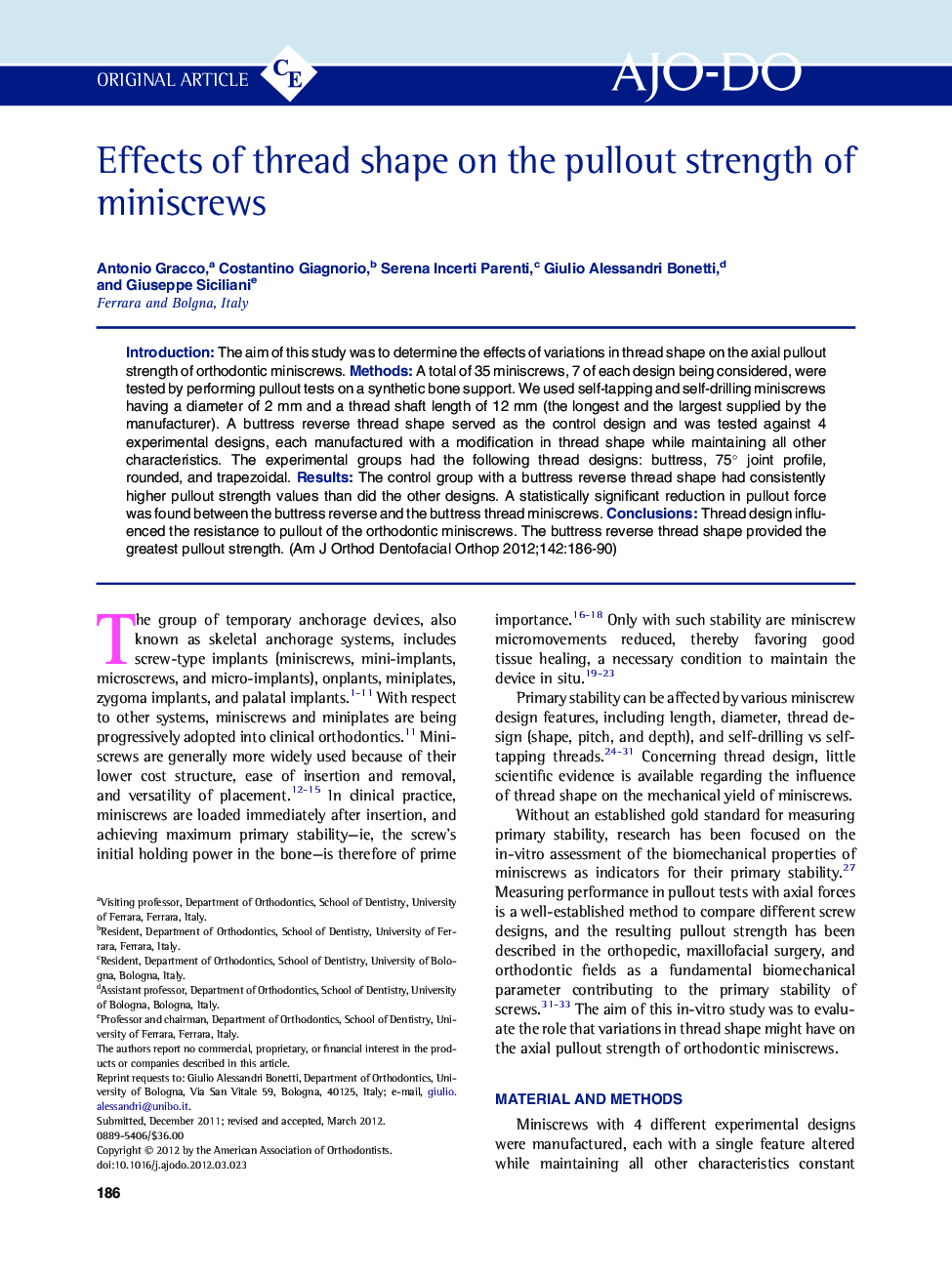| Article ID | Journal | Published Year | Pages | File Type |
|---|---|---|---|---|
| 3116500 | American Journal of Orthodontics and Dentofacial Orthopedics | 2012 | 5 Pages |
IntroductionThe aim of this study was to determine the effects of variations in thread shape on the axial pullout strength of orthodontic miniscrews.MethodsA total of 35 miniscrews, 7 of each design being considered, were tested by performing pullout tests on a synthetic bone support. We used self-tapping and self-drilling miniscrews having a diameter of 2 mm and a thread shaft length of 12 mm (the longest and the largest supplied by the manufacturer). A buttress reverse thread shape served as the control design and was tested against 4 experimental designs, each manufactured with a modification in thread shape while maintaining all other characteristics. The experimental groups had the following thread designs: buttress, 75° joint profile, rounded, and trapezoidal.ResultsThe control group with a buttress reverse thread shape had consistently higher pullout strength values than did the other designs. A statistically significant reduction in pullout force was found between the buttress reverse and the buttress thread miniscrews.ConclusionsThread design influenced the resistance to pullout of the orthodontic miniscrews. The buttress reverse thread shape provided the greatest pullout strength.
